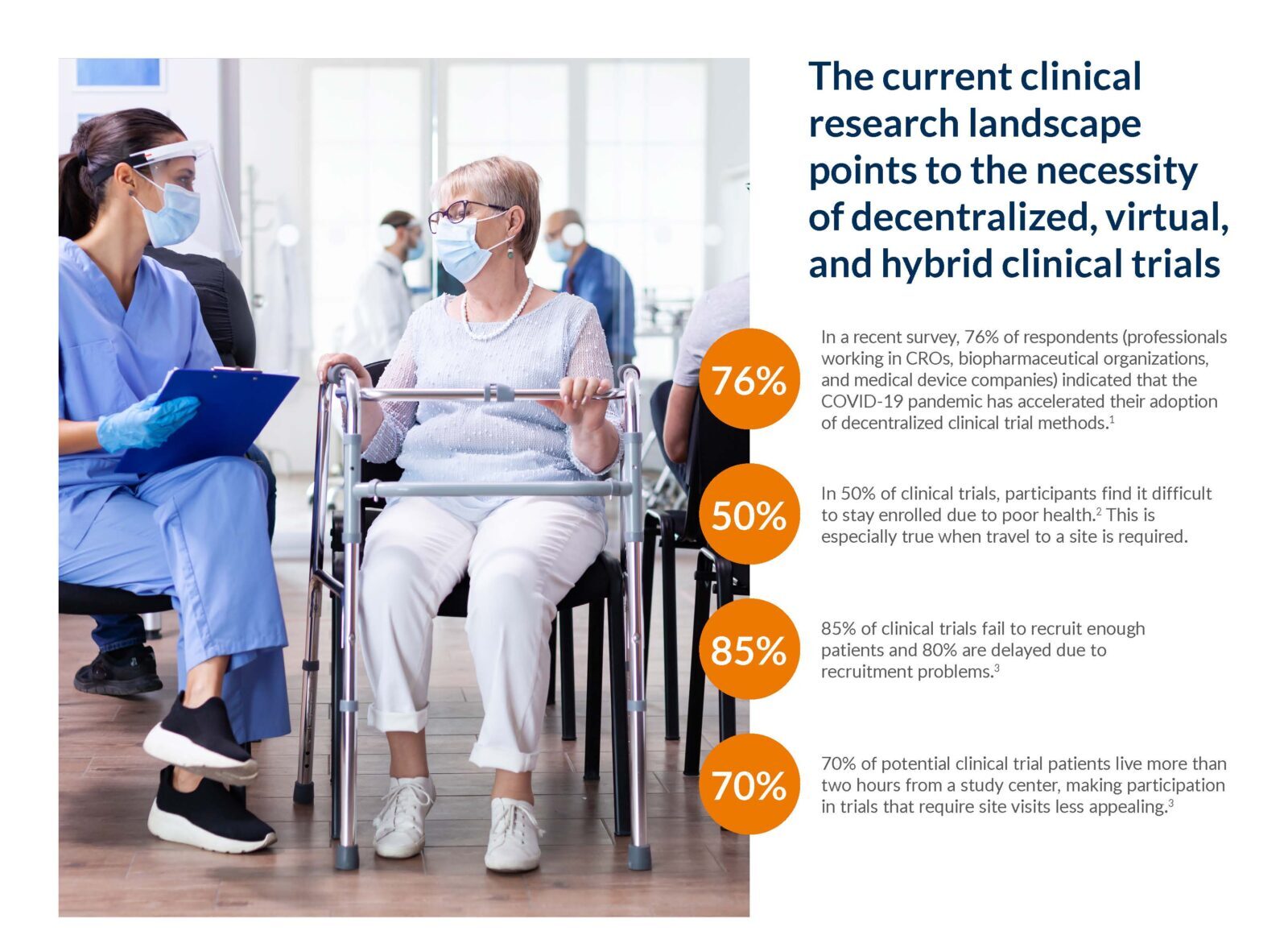The State of Decentralized Clinical Trials (DCTs)
A look at the challenges facing clinical trial sponsors and sites
Decentralized clinical trials were on the rise long before COVID-19, but their success in keeping drug development programs on track during the pandemic won these studies a renewed, leading role in mainstream clinical research. We’ve seen this type of digital transformation in many other areas. It’s akin to what Venmo did for exchanging funds and QR codes have done for restaurant menus. These examples show that as digital, cloud-based tools and technology make their way into the mainstream, the benefits are tangible. And it’s no different for clinical research.
In decentralized clinical trials, studies are being carried out using electronic patient-reported outcomes (ePRO/surveys), EHR eSource integration, eConsent, text messages, drug kits sent by mail, patient-directed data sharing, and more. These tools greatly improve the patient experience and advance the traditional clinical trial model.
In this infographic, take a look at some of the challenges clinical trial sponsors and sites are facing and you’ll soon realize the importance of preparing for a DCT.
Access our Blueprint for Decentralized Clinical Trials so that you can overcome these challenges.
Transcript
The current clinical research landscape points to the necessity of decentralized, virtual, and hybrid clinical trials
76%
In a recent survey, 76% of respondents (professionals working in CROs, biopharmaceutical organizations, and medical device companies) indicated that the COVID-19 pandemic has accelerated their adoption of decentralized clinical trial methods.
50%
In 50% of clinical trials, participants find it difficult to stay enrolled due to poor health. This is especially true when travel to a site is required.
85%
85% of clinical trials fail to recruit enough patients and 80% are delayed due to recruitment problems.
70%
70% of potential clinical trial patients live more than two hours from a study center, making participation in trials that require site visits less appealing.

